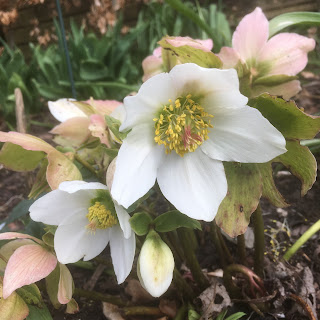When I last wrote this diary, I’d just got to the end of the first draft of my new book. Finishing that draft coincided with my getting something else I’d written back from my agent with lots of things to do and think about, which turned out to be perfect timing. The thing about first drafts is that you really need to write them and then turn your back on them. ‘Drawer time’ some writers call this. What it means is that you get your mind completely free of it, so that when you come back to it, you view it with fresh eyes. You can see what’s great, what’s less than great, where there are holes and inconsistencies. Drawer time is an essential part of the creative process and having something else to immerse your creative self in totally during that time is a perfect way to unshackle yourself from the draft in the drawer.
Did I throw myself into working on the book my agent sent back to me straightaway? No I did not. I griped and complained to myself about what they thought needed to be done to it. I asked writer friends for their opinions about the comments. I asked my agent for clarification on some points. I resisted and resisted. These changes were IMPOSSIBLE! They’d make the story into something else entirely! It wouldn’t be my story anymore. I reread the book from beginning to end. I calmed down a bit. I thought about it for a few days, a week. I did all the other things on my to-do list.
Then I started with the changes that made sense to me, the ones that were easy to do and wouldn’t have a knock-on effect elsewhere in the book.
Then I spent a good bit of time on the beginning. The first 5,000 words are key. Many of the people who are going to be involved in buying and marketing your book will never read beyond those first 5,000 words, so they’d better be hooky as hell. Mine needed more tension, more threat. I tend towards subtle, which has its place, but maybe not in these first 5,000 words.
I came to the big problem, the thing that according to my agent and their industry reader knocks my book from realistic YA speculative fiction into sci-fi: the inclusion of teleporting. My feeling is that it’s such a minor element in the book that it can't change the nature of the book. The way people travel is very important to the world-building and in this particular context, I needed something as near instantaneous as possible. But could I have almost instantaneous travel in a ‘realistic’ way? I just couldn't see it. So I wrote a list of possible ways to doing this by advancing technologies we have now. I came up with a solution. It’s not as elegant as teleporting and I’d argue that it still seems a bit sci-fi, partly because I had to give more explanation of how it works, whereas with teleporting, well, everyone knows how that ‘works’.
More reading, more tweaking. Another beginning to end read-like-a-reader read. And now the book's with a couple of useful readers for comments before I finalise the changes and send it back to my agent to see what they think.
Which means it’s time to open the drawer and take out that first draft again. I’ve read it through. There’s everything I expected: parts that work and parts that don’t, a big hole where I somehow missed out a scene that was on my plan, some overlaps because I wrote out of sequence. But, you know, it’s a great story. The beginning and end are in the right place. All the people are there. I can see where I need to build on it. Drawer time, folks – it’s invaluable.
My new book, Snippets, is available now.
You can read a Snippets story that's not in the book here.
You can get a copy of Snippets on Amazon http://authl.it/c5p?d
Go to https://ko-fi.com/clairewatts to read a new Snippets story every month.
It’s free, but you can support me with a donation if you like.

